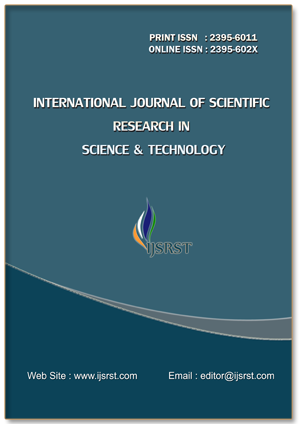Study of Climate Change Effect on Bird Population at Muzaffarpur Districts of Bihar
Keywords:
Climate change, Bird populations, Conservation BiologyAbstract
Climate change has emerged as a significant threat to global biodiversity, with far-reaching consequences for bird populations. This study investigates the impact of climate change on bird population in Muzaffarpur, Bihar, India. We conducted a comprehensive survey of bird species in the region, analyzing data on population trends, habitat use, and migratory patterns. Our results indicate a significant decline in bird populations, particularly among migratory species, over the past decade. Changes in temperature and precipitation patterns as well as habitat destruction and fragmentation, were identified as primary drivers of this decline. Notably, the study reveals a shift in the migratory patterns of certain species, with some birds arriving earlier or later than usual, potentially disrupting their breeding and foraging habits. Our findings underscore the urgent need for conservation efforts to migrate the impacts of climate change on bird populations in the region. We recommend the development of climate-resilient habitats, restoration of degraded ecosystems, and implementation of adaptive management strategies to protect Muzaffarpur’s avifauna.
Downloads
References
D. King, D.M. Finch, Climate Change Resource Center U.S, The effects of climate change on terrestrial birds of North America, U.S. Dept. Of Agriculture, Forest Service, Climate Change Resource Center, Washington, Dc, 2013.
D. Scridel, M. Brambilla, K. Martin, A. Lehikoinen, A. Iemma, A. Matteo, S. Jähnig, E. Caprio, G. Bogliani, P. Pedrini, A. Rolando, R. Arlettaz, D. Chamberlain, A review and meta-analysis of the effects of climate change on Holarctic
J.W. Pearce-Higgins, R.E. Green, Birds and Climate Change: Impacts and Conservation Responses Ecology, Biodiversity and Conservation, Cambridge: Cambridge University Press, 2014.
H.Q.P. Crick, C. Dudley, D.E. Glue, D.L. Thomson, UK birds are laying eggs earlier, Nature. 388 (1997) 526–526.
B.G. Freeman, M.N. Scholer, V. Ruiz-Gutierrez, J.W. Fitzpatrick, Climate change causes upslope shifts and mountaintop extirpations in a tropical bird community, Proceedings of the National Academy of Sciences. 115 (2018) 11982–11987.
Mark, van Ommen, V.I. Morgan, K.L. Phillips, A.S. Palmer, Ice core evidence for antarctic sea ice decline since the 1950s, Science. 302 (2003) 1203–1206. https://doi.org/10.1126/science.1087888.
D.J. Brown, D.M. Donner, C.A. Ribic, C.I. Bocetti, Influence of climate change and postdelisting management on long‐term population viability of the conservation‐reliant Kirtland’s Warbler, Ecology and Evolution. 9 (2019) 10263–10276.
T.K. Lameris, I. Scholten, S. Bauer, M.M.P. Cobben, B.J. Ens, B.A. Nolet, Potential for an Arcticbreeding migratory bird to adjust spring migration phenology to Arctic amplification, Global Change Biology. 23 (2017) 4058–4067.
M.M. Jackson, S.E. Gergel, K. Martin, Effects of Climate Change on Habitat Availability and Configuration for an Endemic Coastal Alpine Bird, PLOS ONE. 10 (2015) e0142110.
A. Lehikoinen, R. Virkkala, North by north-west: climate change and directions of density shifts in birds, Global Change Biology. 22 (2015) 1121–1129.
Ç.H. Şekercioğlu, R.B. Primack, J. Wormworth, The effects of climate change on tropical birds, Biological Conservation. 148 (2012) 1–18.
M. Gilbert, J. Slingenbergh, X. Xiao, Climate change and avian influenza, Revue Scientifique et Technique (International Office of Epizootics). 27 (2008) 459–466.
D. Stone, Predicted climate changes for the years to come and implications for disease impact studies, Rev. Sci. Tech. Off. Int. Epiz. 27 (2008).
C.T. Atkinson, D.A. LaPointe, Introduced Avian Diseases, Climate Change, and the Future of Hawaiian Honeycreepers, Journal of Avian Medicine and Surgery. 23 (2009) 53–63.
B. Huntley, Y.C. Collingham, S.G. Willis, R.E. Green, Potential Impacts of Climatic Change on European Breeding Birds, PLoS ONE. 3 (2008) e1439.
M. Gilbert, J. Slingenbergh , and X. Xiao . "Climate change and avian influenza." Revue Scientifique Et Technique 27.2(2008):459.
C.E. Harris, M.S. Pritchard, R.W. James, E.E. Englehardt, M.J. Rabins, Engineering ethics : concepts and cases, Cengage, Boston, Ma, 2019. mountain and upland bird populations, Ibis. 160 (2018) 489–515.
V. Loeb, V. Siegel, O. HolmHansen, R. Hewitt, W. Fraser, W. Trivelpiece, S. Trivelpiece, Effects of seaice extent and krill or salp dominance on the Antarctic food web, Nature. 387 (1997) 897–900.
S. Nicol, T. Pauly, N.L. Bindoff, S. Wright, D. Thiele, G.W. Hosie, P.G. Strutton, E. Woehler, Ocean circulation off east Antarctica affects ecosystem structure and seaice extent, Nature. 406 (2000) 504–507.
A. Atkinson, V. Siegel, E. Pakhomov, P. Rothery, Longterm decline in krill stock and increase in salps within the Southern Ocean, Nature. 432 (2004) 100–103.
C.L. PARKINSON, Southern Ocean sea ice and its wider linkages: insights revealed from models and observations, Antarctic Science. 16 (2004) 387400.
K. Fletcher, D. Howarth, A. Kirby, R. Dunn, A. Smith, Effect of climate change on breeding phenology, clutch size and chick survival of an upland bird, Ibis. 155 (2013) 456–463.
C.D. Thomas, Climate, climate change and range boundaries, Diversity and Distributions 16(3) (2010).
M.R. Gasner, J.E. Jankowski, A.L. Ciecka, K.O. Kyle, K.N. Rabenold, ScienceDirect - Biological Conservation: Projecting the local impacts of climate change on a Central American montane avian community, (2010).
B. Crona, S. Käll, T. Van Holt, Fishery Improvement Projects as a governance tool for fisheries sustainability: A global comparative analysis, PLOS ONE. 14 (2019) e0223054.
Downloads
Published
Issue
Section
License
Copyright (c) 2025 International Journal of Scientific Research in Science and Technology

This work is licensed under a Creative Commons Attribution 4.0 International License.
https://creativecommons.org/licenses/by/4.0





